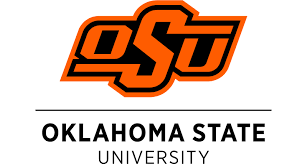Paul Beck, OSU Extension Beef Nutrition Specialist
When I was a kid, my Great Uncle Ed Frank would come visit us from Arkansas. Years before he had sold his ranching operation in western Oklahoma and bought a farm in the Arkansas Delta. His business model was ultimately based on grazing Mississippi Levee land for $1/mile for the season with calves bought cheap from sale barns in Louisiana, Mississippi, and Arkansas before shipping them to feedyards in the Texas Panhandle. As an impressionable youth, I asked him “How do you make money in the cattle business?” and his answer blew me away with its wisdom and simplicity.
He said, “Buy low, sell high, keep ‘em alive, and put gain on ‘em cheap”.
As cliché as it sounds, it really impressed me at the time and I have spent most of the last 35 years studying these topics. For the next few weeks, I am going to write about each one of these to explore the truth behind this wisdom, this week I will cover “Buy low, sell high”.
This is possible for both cow-calf and stocker producers.
For cow-calf producers, we can do this when we expand our operation when the rest of the industry is in the contraction phase of the cattle cycle. When the cattle cycle is in contraction, others are selling cows because they cowherd has been built up to such an extent that calf prices are at cyclical lows. Expansion of your cowherd, happens when everyone else is selling, at a cheaper price. Usually within a few years, calves from the expanded cowherd are sold when there are low cattle numbers and at a higher price.
Can you really pull this off in the stocker business? Or will cheap calves always be cheaper?
The Noble Foundation graded 395 cattle before turnout and coming off winter pasture, and then followed them through finishing and slaughter. The 110 steers that were graded as Small Frame, were purchased at a $13 per hundred weight discount. When calves were graded after grazing only 58 were still considered Small Frame. Calves purchased as Small Frame, were valued only $1/cwt less than Medium Frame steers at the end of grazing and were $27/head more profitable. These calves were all of English (Angus or Hereford) or Continental (Charolais, Simmental, etc.) breeds with little to no Brahman, dairy, or Longhorn breeding.
The classic example of buying cheap and selling high occurs when the cow-calf producer sells an un-weaned, horned, bull calf. These calves can often be found at discounts up to $25/cwt. There are reasons why these calves are discounted as much as they are. We will cover this topic next week when we explore “keep ‘em alive”.














